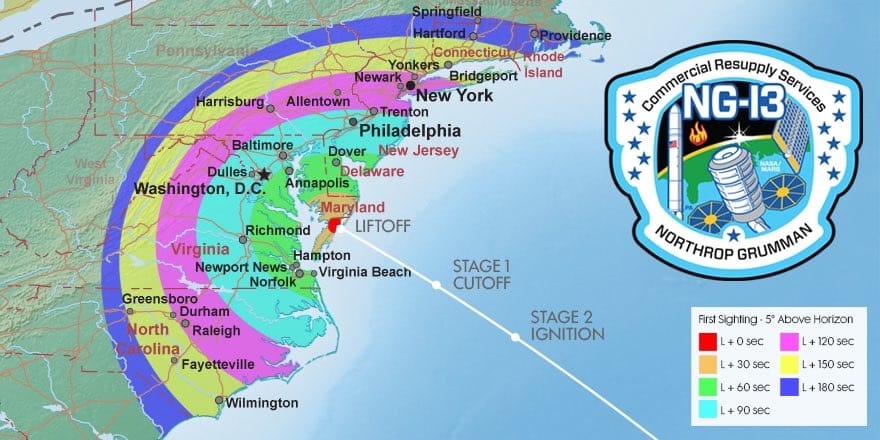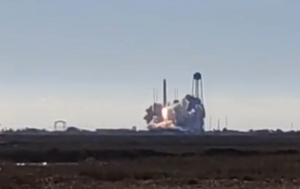
Looking for an out-of-this-world Valentine’s Day date idea? Perhaps you should check out the rescheduled launch of a Northrop Grumman Antares rocket which will lift-off from the Virginia coastline on Friday. The CRS-13 mission bringing cargo and science to the International Space Station has been rescheduled for 3:43 pm ET on Friday, February 14.
NASA says the date change is reflective of an improved weather forecast, time to test the replaced ground sensors, and to allow for refresh of critical late load science. Items like fruits and vegetables originally loaded into Cygnus will be swapped out for fresh ones.
The Wallops Visitor Center will open at 11:30am and NASA TV coverage will begin at 3:15 p.m. on launch day. However, many will be able to view the rocket simply by looking outside along the heavily populated I-95 corridor in the Mid Atlantic.
The launch should be visible across much of the Mid Atlantic from New York City south to the Outer Banks of North Carolina and west into central Virginia. Another Antares rocket had launched from this facility on November 2 last year, bringing various supplies and experiments to the ISS –including an experimental oven that allowed astronauts to bake chocolate chip cookies in space for the very first time.

This 13th commercial resupply services mission will bring thousands of pounds of food, supplies, and science to the the ISS. Among the cargo is the Mobile SpaceLab, a tissue and cell culturing facility that launches and returns on space station resupply spacecraft to offer researchers a quick-turnaround, high-throughput platform that can perform a biology experiment without the need for crew operations for as long as a month. Plant Habitat-02, which will cultivate radishes in the Advanced Plant Habitat facility , is also headed to the ISS on this rocket launch. The ability to reliably grow nutritionally-valuable food crops in space is critical for NASA’s human exploration of the Moon and Mars planned in the coming years. The Cygnus cargo craft will also host the Spacecraft Fire Experiment-IV (Saffire-IV) investigation, which will use the resupply vehicle after it leaves the space station to examine the development and growth of a fire in different materials and environmental conditions. Understanding how fires spread in space is vital for developing flame-resistant materials and fire prevention measures to be used in future space missions.
The NASA Wallops Visitor’s Center will be open for launch, providing guests with one of the closest views of a launching ISS-bound rocket in the United States. According to the Visitor’s Center, more than 5,000 came out to watch the last launch in November. A specific window of time the center will be open for this launch will be made in the coming weeks. Typically the center reaches capacity a few hours prior to launch. At the Visitor’s Center, the roar of the rocket can be felt as it lifts up over the Atlantic Ocean.

Elsewhere, the rocket can be viewed in eastern skies across a large area of the Mid Atlantic, as long as Mother Nature cooperates with cloud-free skies. The rocket should be visible within a minute of launch across much of eastern Virginia, Maryland, and Delaware. By 2 minutes, the rocket should become visible from central New Jersey, southeastern Pennsylvania, Washington, DC, central Virginia, and northeastern North Carolina. Because of the scheduled time of this rocket shortly after sunset, the exhaust plume of the rising rocket should be quite visible shortly after launch.